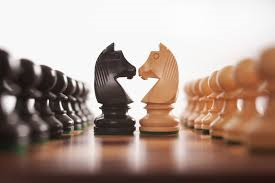|
Demobilising the hatred
The carnage from Orlando is still sinking in and I am still resonating with the search within me of how the bigger picture could look as we walk towards greater peace, and yesterday Jo Cox MP was killed, and I send waves of grounded and holding love and kindness to her husband, her family, her community as they reel in the shock of this horrific death, sending peace to Jo as she moves on and thanks for all her work for her and our community and country. And I hear on the radio “We have to fight against the hate that killed Jo Cox” and I question this ‘fighting’ and I question this ‘against’, in the context of how I am receiving and investigating Rabbi Michael Lerner’s article. I will follow this up with more writing on what it takes to ‘empathise with the enemy’ and what I imagine to be the resources and support needed to do so (don’t do it alone ….) Snippets from Rabbi Michael Lerner’s (RML) response to the Orlando Massacre. (Full article here http://www.tikkun.org/nextgen/grieving-for-orlando-for-glbtq-for-muslims-for-america) My comments added.(CB) RML:We will not let any sector of “us” get scared that the rest of us will abandon them. Just as I said at Muhammed Ali’s funeral that Jews will stand with Muslims in the face of growing Islamophobia (all the more needed now that some politicians are trying to use the horror of the mass murder of members of the LGBTQ community in Orlando by a supposedly Muslim young man to justify repression against Muslims). We will not let any of them become an “acceptable” target for the haters. Not the LGBTQ community, not anyone. “We are one global “we,” and we must never let any part of us become the target that is somehow made a “legitimate” target.” CB: WHAT DOES THIS LOOK LIKE … TO NOT LET THIS HAPPEN?, that we observe when a community or group or individual is being isolated and step towards them …? RML:“But true solidarity needs to go beyond standing with the victims of hate crimes, including, homophobia, Islamophobia, racism, anti-Semitism, sexism, xenophobia and all the other variants of hatred. True solidarity should guide us to the imperative to develop strategies to heal the distortions and pains that lead people into communities of hate.” CB: HOW DO WE HEAL THE DISTORTIONS THAT LEAD PEOPLE INTO COMMUNITIES OF HATE? Does this involve looking at the needs people are meeting when they step into a community of hate …. Belonging, community, acceptance … and then consider how we catch their attention to attract them out of that community .. possibly with … belonging, community, acceptance of the humanity of the person, even if we do not accept the actions this person is involved in. “Our strategies must separate the hateful behavior from the pain in people that underlies their misdirected rage, and sometimes violent actions. We must develop ways to speak to those deep psychic wounds and hurts, and show people that there are better and more effective strategies to deal with those pains than to act them out on others, whether that acting out be in the form of demeaning, raping, making war against others, or in the form of mass politics of hatred.” CB: HOW DO WE SPEAK TO THE DEEP PSYCHIC WOUNDS AND HURTS? Do we commit to witnessing and acknowledging the deep psychic wounds and hurts a person involved in hate communities and actions has experienced? How do we gain the trust of these people in the first place? In my exploration of Empathy, I witness empathy as being equated with being ‘Nice’ yet, empathy, the physical manifestation of the state of compassion is not about being nice. It is possible to exercise empathy when tussling with extreme internal fear. Empathy is seen as being ineffective and I guess we have not practiced enough, as a human species, a radical form of empathy that includes those who are radically other to us or who do things we think are dangerous or whose actions harm us. Within Nonviolent Communication (NVC) the practice that informs my approach to empathy, there is a strategy for empathizing with the enemy, called Dissolving Enemy Images. Here is my version of the practice. Transforming judgements and enemy images
0 Comments
Leave a Reply. |
Authorby Ceri Buckmaster Archives
February 2023
Categories |

 RSS Feed
RSS Feed
